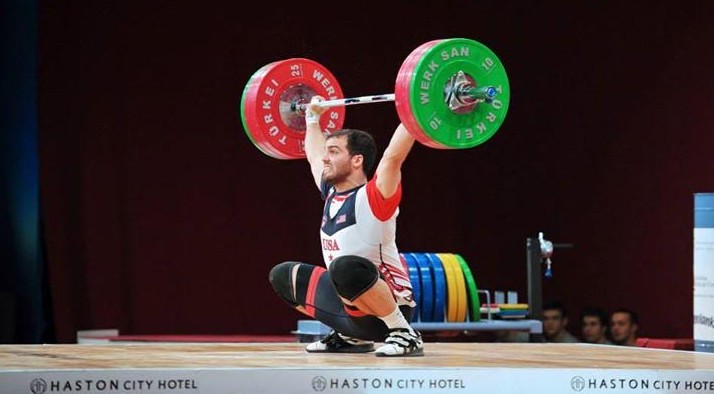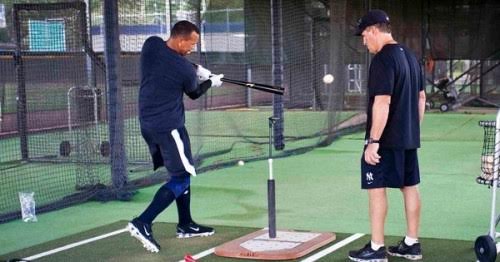
The traditional squat snatch is without a doubt one of the most difficult barbell movements to grasp. If a boulder fell on someone laying on their back, odds are they will push the boulder off by performing something that looks like a bench press. If I asked that same person to pick up something heavy or stand up with a sandbag across their back, they would perform something that resembles a squat or deadlift. However, the same logic cannot be applied to a classical snatch.
It is simply not a natural movement. If you think about it, you have to be a little nuts to attempt a heavy snatch. One of the requirements of being a weightlifter, I guess!
In order to become proficient at the snatch, you’re going to have to dedicate more time on technique work than you typically would on other compound barbell movements.
You need to put in a certain amount of work and develop a basic motor pattern before you can identify your weaknesses.
tweet thisThe most important factor to improve technique, above everything else, is the number of quality repetitions. Brand new lifters should not stray too far from the classical lifts. You need to put in a certain amount of work and develop a basic motor pattern before you can identify your weaknesses.
In fact, some elite lifters never deviate much from the classical lifts at all; they just put in thousands of traditional reps in an attempt to fix problems.
This method works, but people have limited time and energy and this is not the best approach for anyone who hasn’t been trying this style since they were young (i.e. almost everyone outside of Eastern Bloc/State-supported countries).
Once you have a very basic idea of how to snatch, the faster and more efficient approach to developing technique is to use corrective exercises.
I was first exposed to this philosophy when I trained under Zygmunt Smalcerz at the Olympic Training Center. Zygmunt’s approach to developing technique involved a variety of exercises instead of preforming only the classical lifts. Every exercise has a purpose.
I compare this approach to a professional baseball player working on his swing: he does not only try to improve by taking batting practice. He breaks the swing into individual components and does a variety of drills to work on the various pieces (drills like hitting off the tee, soft toss, knob drill, etc).

Working on the lifts is no different. The fastest way to develop technique is to break the lift into different components and strengthen the individual positions.
This way, when you sum all the parts (i.e. perform a full lift), your body will be much more disciplined in each phase of the lift and your overall technique will be better. This method can be used to address weaknesses and break plateaus.
Keeping all this in mind, my favorite exercises for improving the various parts of the snatch are as follows:
1. Snatch without moving your feet
How it’s done:
- Start by putting your feet in the catch position and getting your normal snatch grip with NO hook grip.
- Then perform a snatch while keeping your feet planted on the platform.
- Focus on keeping the bar close and don’t be afraid to use your upper body more than you usually do on a regular snatch to get the bar in the right position.
Why you should do it:
The purpose of this exercise is to work on the bar path and the finish of the pull. By not moving your feet, you are forced to keep the bar close and really focus on good timing. This will help correct bar looping and jumping back or forward. This also teaches you how to receive the bar correctly by aggressively pulling under. The purpose of the no hook is to slow the bar down so you can simulate a heavier lift and work on grip strength.
When to use it:
You can do this exercise on your “non-lift” days. Think of it as a good alternative to power snatching. This is a supplemental lift and it should be treated as one! Also, there is really no need to go crazy heavy. About 70-75% of your best snatch is enough. Any heavier will defeat the purpose of doing the exercise by ingraining bad habits.
Watch a demo:
2. Press in snatch
How it’s done:
- Start with the bar on your back and get a snatch grip.
- Squat down to the bottom of the hole with your feet as wide as they would be in the bottom of a snatch.
- Keep your core and back tight, lower body still, and press up!
- When the bar is overhead, pause for a second and then bring the back down slowly.
Why you should do it:
This exercise is aimed at improving balance and stability in the bottom of the snatch. This is a great tool for developing bar awareness along with flexibility. It will also help with some specific upper body strength!
When to use it:
This is a great warm up exercise for any type of snatching and I like to do this before any snatch workout. A good starting point is 3-5 sets of 2-4 reps. There’s no need to push giant weights on this; just make sure whatever weight you pick moves fast. For reference, my best snatch is 150 kg and I have never worked above 70-80 kg on the snatch press.
Watch Two Tutorials from Olympian Chad Vaughn and National Champ Anthony Pomponio:
3. RDL Snatch
How it’s done:
- Start with a normal Snatch Grip and keep your legs straight (like you are doing an RDL).
- Then snatch!
- Focus on using your back and lats to keep the bar close to you and finish.
Why you should do it:
This is a VERY uncommon exercise I picked up a few years ago while training in Boston. To quote Yasha Khan, the man that showed it to me, “By taking the legs out of the equation, the lifter goes through the right position at which the back opens up while legs are nearly straight – because of which the feet, shoulders and arms will correctly take over.” This is a great exercise to teach you how to stay over the bar and keep the bar close to the body during the finish. I know this lift looks crazy, but it is a phenomenal plateau buster.
When to use it:
This is an alternative to snatching. You can go heavier on these (as long as technique is ok), but be VERY careful if this is your first time doing them. Not surprisingly, this will work the crap out of your back. Treat this as you would snatching from the blocks of snatching from the hang.
Watch a demo from Yasha:
If you feel like you’re stuck in a rut and your snatch isn’t going anywhere, try these guys out and let me know what you think in the comments below.
Train hard!
Mike

Comments